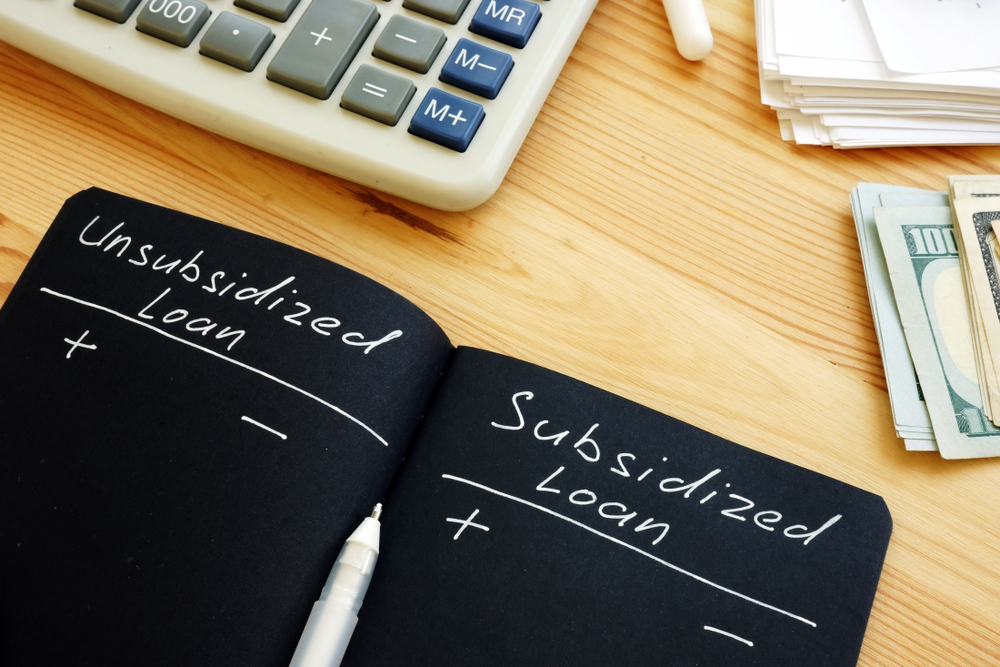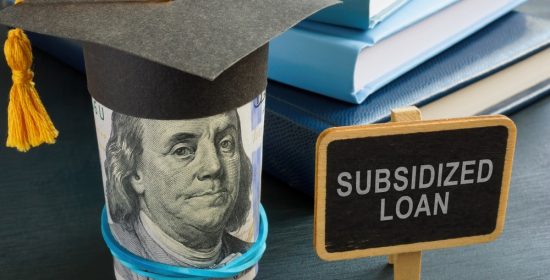Key Highlights:
- Subsidized loans are a form of financial aid, typically provided by the government to eligible students to cover the cost of higher education.
- Unlike unsubsidized loans, the government covers the interest on subsidized loans while the student is in school, during the grace period after leaving school, and during authorized periods of deferment.
- This assistance aims to make higher education more accessible and affordable for students from low-income households, reducing their reliance on higher-interest loans and minimizing the long-term financial burden of student loan debt.
What are Subsidized Loans?
Subsidized loans offer additional financial support for students pursuing higher education. Unlike other types of loans, the government covers the interest on Direct Subsidized Loans*. This means that eligible students do not accrue interest on subsidized loans during specified periods, making them a cost-effective option for financing education. These loans play a vital role in making higher education accessible and affordable for students from low-income households, helping them achieve their academic and career aspirations without facing immediate financial burdens.
Who Can Get Direct Subsidized Loans?
To qualify for subsidized loans, students must demonstrate financial need, as determined by the Free Application for Federal Student Aid (FAFSA). Direct Subsidized Loans are available to undergraduate students with demonstrable financial need.
How Much Can You Borrow With Direct Subsidized Loans?
Your school typically determines the amount you can borrow from direct subsidized loans, and the amount may not exceed your financial need.
Who Pays the Interest on Direct Subsidized Loans, and When?
The U.S. Department of Education pays the interest on Direct Subsidized Loans:
- while you’re enrolled in college at least half-time,
- for the first six months after you leave college (referred to as a grace period), and
- during authorized periods of deferment (a postponement of loan payments).
The interest rate for Federal Direct Subsidized Loans (first disbursed on or after July 1, 2023, and before July 1, 2024,) was 5.50%.
Note: You may sometimes hear the term ‘Stafford Loan’ being used synonymously with federal direct subsidized loans. However, this is technically incorrect. The Stafford Loans program ended in 2010. If you are currently applying for a new loan and your school uses the term Stafford Loan, then they are probably talking about a Federal Direct Loan.
A direct subsidized loan is one of the federal direct loans offered by the U.S. Government.
For more information on the types of federal direct loans, check out the government page on Federal Direct Loans.
How are Subsidized Loans Different From Unsubsidized Loans?
The main difference is that with subsidized loans, the government typically covers interest while the student is in school, whereas with unsubsidized loans, interest begins accruing from the time they are disbursed.
Besides this, there are a few other distinctions you should be aware of when comparing subsidized vs. unsubsidized loans.
Subsidized Loans Vs. Unsubsidized Loans
| Aspect | Subsidized Loans | Unsubsidized Loans |
| Interest Covered By | The government covers interest during school and deferment | The student/borrower is responsible for all interest accrued |
| Eligibility | Based on financial need | Available to all students regardless of need |
| Interest Accrual | Interest does not accrue while in school | Interest begins accruing upon disbursement |
| Loan Limits | Lower loan limits compared to unsubsidized loans | Higher loan limits available |
| Repayment Options | Typically offer more favorable repayment terms | Repayment terms may vary depending on the lender |
| Availability | Available in limited quantities based on funding | Generally available to all eligible students |

Interest Coverage
Subsidized loans have the government cover interest during school and deferment. Unsubsidized loans require the borrower (or a cosigner) to pay all interest accrued.
Eligibility
Subsidized loans are based on financial need. Unsubsidized loans are available to all students regardless of need.
Interest Accrual
Interest on subsidized loans does not accrue while in school. This means that, if eligible, you do not have to worry about interest accruing while you’re still studying. On the other hand, for unsubsidized loans, interest begins accruing upon disbursement.
Loan Limits
Subsidized loans typically have lower loan limits compared to unsubsidized loans, which offer higher loan limits. This means the maximum amount you can borrow is usually lower for a subsidized loan than for an unsubsidized loan.
Repayment Options
Subsidized loans typically offer more favorable repayment terms. Unsubsidized loan repayment terms can vary depending on the lender.
Availability
Subsidized loans are available in limited quantities based on funding. Unsubsidized loans are generally available to all eligible students.
Subsidization serves as a financial lifeline for many students, particularly those from low-income households who may struggle to afford the rising costs of college tuition. By reducing the burden of interest payments, subsidized loans enable students to focus on their studies without worrying about immediate financial obligations.
In short, subsidized loans tend to offer better financial assistance to students with financial need than unsubsidized loans. Subsidized loans offer better repayment options, with most of the interest being covered by the government. However, you may not be eligible if you don’t have demonstrable financial need, and the availability of funds may be limited.
The official studentaid.gov website has useful information on subsidized and unsubsidized loans that you could benefit from.
Addressing Common Misconceptions With Subsidized Loans
Misconceptions about subsidized loans can lead to confusion and misinformation among students and families. Addressing these misconceptions is essential to ensure that you have accurate information when making financial decisions regarding your college education.
- One common misconception is that subsidized loans are only available to a select few students. In reality, subsidized loans are accessible to students who demonstrate financial need, as determined by the FAFSA.
- Some may believe that subsidized loans are entirely free from repayment obligations. While the government covers the interest on subsidized loans during specific periods, borrowers are still responsible for repaying the principal amount borrowed, along with any accrued interest after leaving school.
- Another misconception is that subsidized loans are always the best option for borrowing money for college. While subsidized loans DO offer very attractive benefits, they may not always meet ALL your financial needs. In such cases, you may need to explore additional sources of financial aid, such as grants, scholarships, or private student loans, to cover your educational expenses.
Before you apply for student loans, ensure you’ve cleared these misconceptions, explored other forms of aid, and have all the necessary information to make the right decision.
There are some scholarships you can apply for, which do not require you to submit an essay. These No-Essay Scholarships may be worth exploring if you’re looking for ways to finance your college journey.
To Sum Up
Subsidized loans provide essential financial relief for many students pursuing higher education. Targeted specifically towards those with demonstrated financial need, these loans help low-income students access crucial financial aid. By covering interest during school and deferment periods, subsidized loans help students avoid higher-interest loans and minimize significant debt accumulation. Understanding and utilizing subsidized loans can make education more affordable, helping students achieve their academic goals with greater financial security. If you have financial need, it’s worth exploring subsidized loans to make college as accessible for you as possible.
Frequently Asked Questions (FAQs)
Yes, if you take a subsidized loan, you’re expected to pay back the principal amount borrowed, plus interest accrued after you leave school or during repayment periods.
With subsidized loans, the government covers interest during school and deferment periods, while unsubsidized loans accrue interest from the time they are disbursed, with the borrower responsible for all interest.
Yes, subsidized loans have interest, but the government covers it during the period within which the student is in school and during authorized deferment periods.



